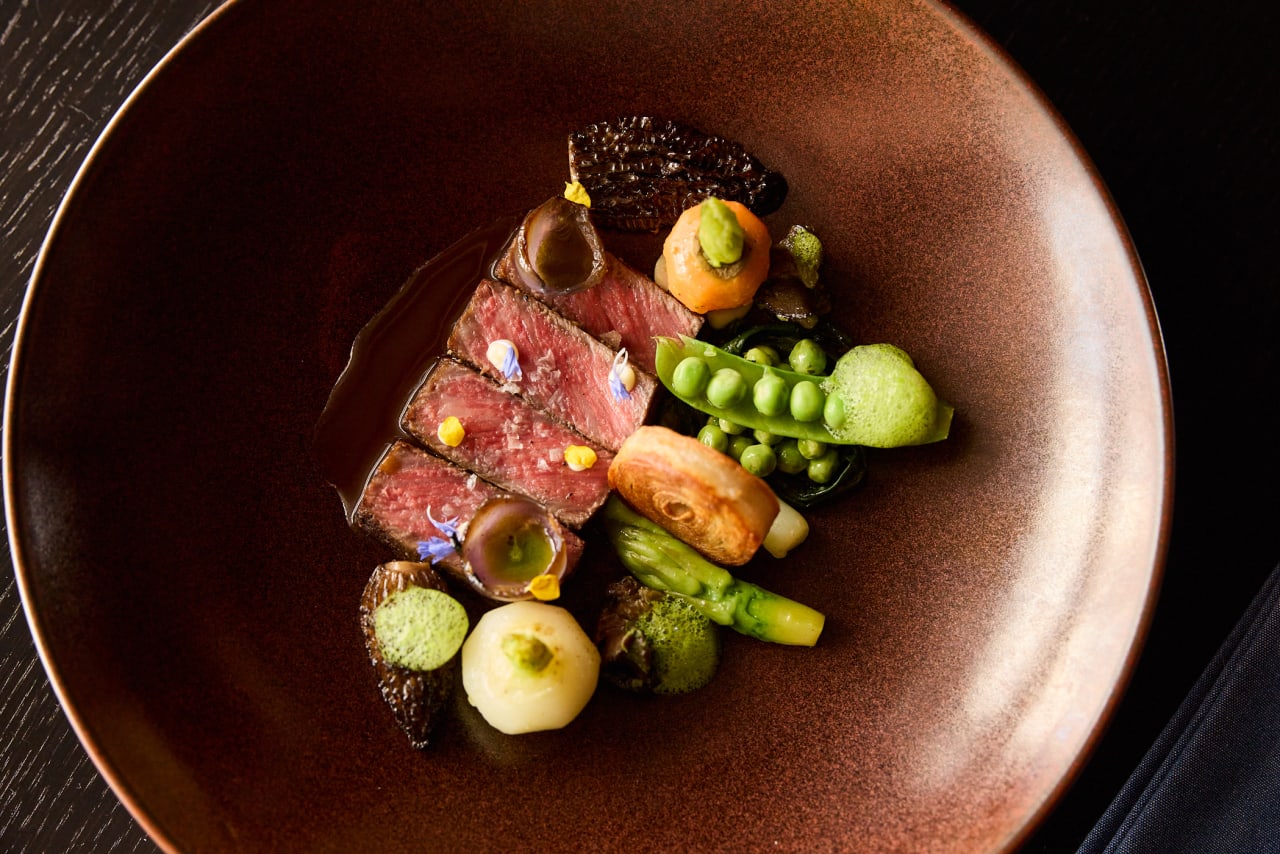In The Kitchen With Jared Wentworth

Jared Wentworth is chef at Moody Tongue in Chicago, the world’s first two-Michelin star brewery. “I’ve been cooking for about 30 years,” says Jared. “My cooking style has gone from classic French to French-American to more Japanese now. I’d call my sensibility Japanese-French fusion.”
Moody Tongue has a 28-seat dining room with a 15 to 20 course tasting menu, plus a bar with 100 seats and an a la carte offering. “We are definitely not a steakhouse but we love good beef,” says Jared. “It’s quality over quantity. You're never going to come in and get a 45 oz porterhouse from me. You will get a beautiful 3 oz portion that’s exquisite, perfectly seasoned, perfectly salt-finished and just delectable.”
The food is matched with beer brewed on site. “At the level we cook at, people are extremely open,” says Jared. “They just want to see what we can do. The best feeling for me is winning customers over and at the end of the dinner they are smiling and saying they had an amazing meal. That’s the reason I still do this.”
“I wanted to create a dish that was absolutely decadent, over the top in every aspect of richness, deliciousness, unctuousness,” says Jared.
On Wagyu
Wagyu often features on Jared’s menus. “I’ve used a lot of different producers,” he says. “Westhome is one of my favourites, if not my favourite. It’s better than any of the American Wagyu I’ve used. It’s more consistent, it has a bold beef flavour and the yield is really good. It works really well for us.”
On Versatility
Making the most of every product is essential so the versatility of Westholme Wagyu also appeals. “We use the striploin on the tasting menu, cut precisely into cubes, then use the trim to make really good tacos for ourselves at the end of the night,” he says. “The tenderloin is used on the a la carte menu for a tartare. Nothing goes to waste.”

The Dishes
Tenderloin Tartare with Caviar
“I wanted to create a dish that was absolutely decadent, over the top in every aspect of richness, deliciousness, unctuousness,” says Jared. “I love the Westholme tenderloin for that purpose because it does have a nice amount of intramuscular fat. I pair it with stuff I really love: caviar, beautiful Hokkaido sea urchin, pickled mustard seeds, pickled shallots and capers.”
The black truffle is from Australia too. “The Australian truffles rival the best we get from anywhere,” he says. “For me to bring something in, it has to be the best. At the level we are cooking at, we focus on the best ingredients. We use as much from close by as we can but we also want the best: that means white asparagus from France, scallops from Hokkaido, Westholme Wagyu from Australia.”
Striploin with Peas
“The Westholme striploin is consistently on our menu and it gets paired with seasonal accompaniments,” says Jared. “This version shows the best of early spring: foraged morels, asparagus and peas from local farmers, potatoes with layers of roasted garlic between, and fresh snails.”
There’s an interesting technique on the striploin. “We do a reverse sous vide,” he says. “We grill over binchotan, then sous vide them for one and a half hours at the start of service. The Wagyu is our 10th or 11th course. When they come out, they’re perfect. We put them back on the binchotan then slice them to portion.”


On Wagyu and Beer
“It’s surprisingly easy to pair Wagyu with beer,” says Jared. “We do a lot of barrel aging and that is what shines with Wagyu.” He matches the striploin with an oak-barrel-aged Flanders Red Ale. “It has some of the finer qualities of a good Burgundy,” he says. “Think earth notes, good acidity, good tannins: the same aspects you would look for in wine, we look for in beer.”
With the tartare, he might lean towards a toasted rice lager. “It has fine bubbles which are very palate cleansing for the fat and unctuousness in that dish,” he says.

On Kitchen Culture
“It’s a different landscape from the decades I came up,” says Jared. “It’s definitely more nurturing than a seek and destroy. The pirate ship sank for me eight or nine years ago. As a person and a chef there’s now a natural leaning towards education, growth and life balance.” Building a team is more important than anything. “I couldn’t do it without them,” he says. “We pay people well, give them good benefits, treat them with dignity and respect. And I lead by example. I work alongside my team, not with a clipboard or calling tickets, I am on the line with those guys every night.”